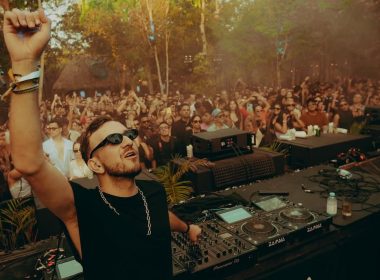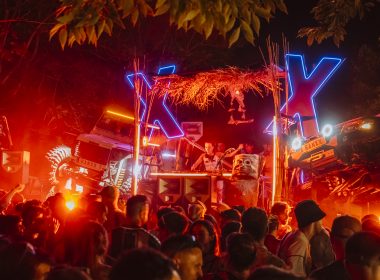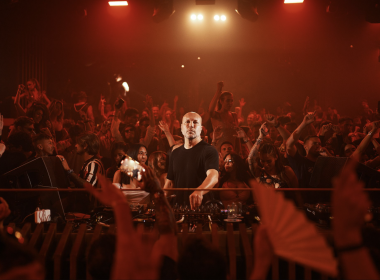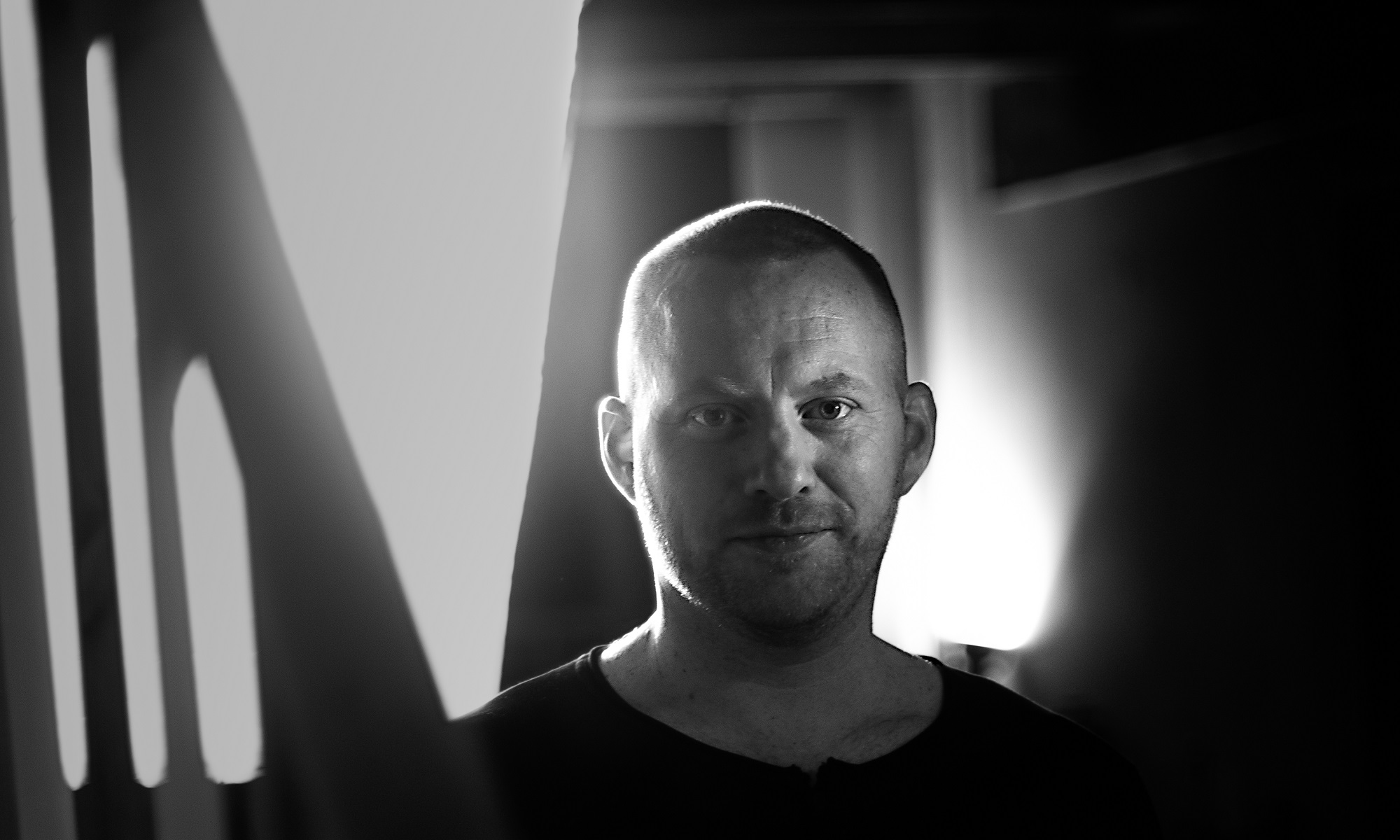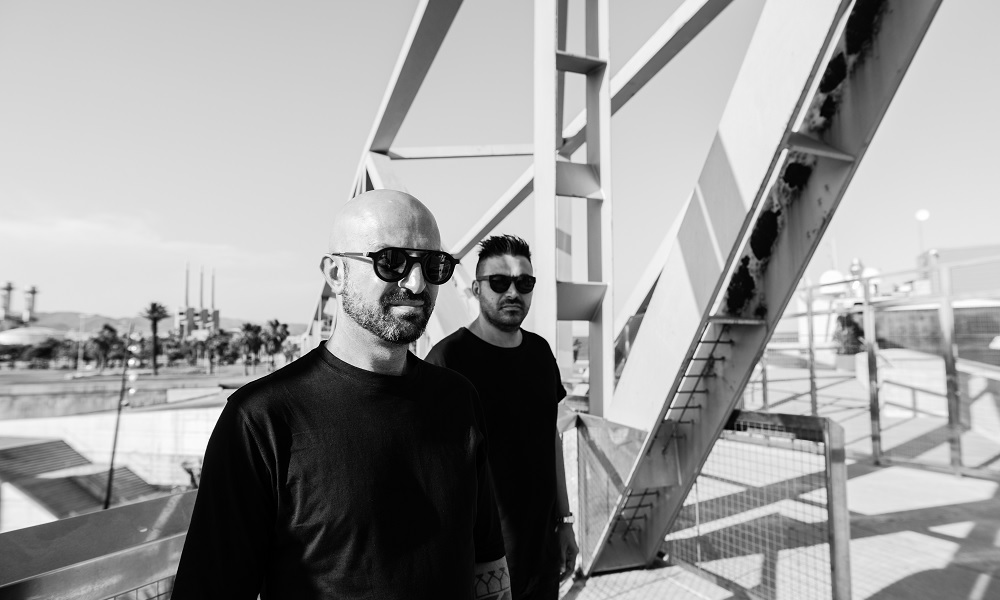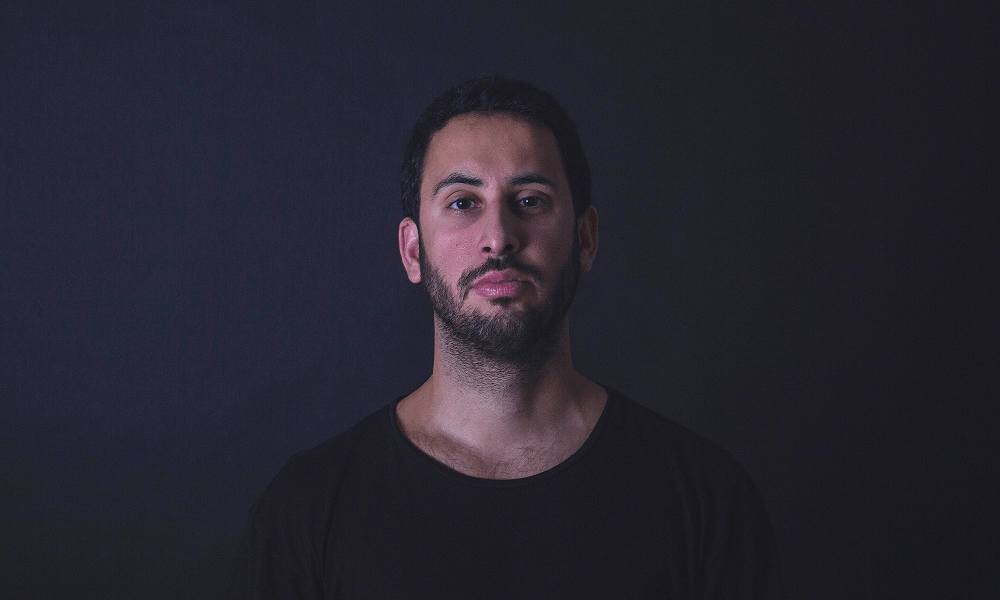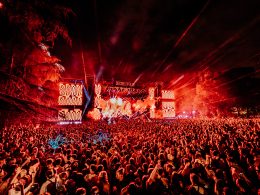Hybrasil (real name Will Kinsella) is known for so many things that it’s easy to miss the mark. His story began in his native Ireland, where he joined the Pirate Radio movement to defend independent music away from any marketing or commercial approach. Besides DJing and producing, Hybrasil developed a parallel career as a sound technician, which has led him to become the right-hand man of Matt Edwards, better known as Radio Slave (you can see our CUE Interview with him here), and Patrick Mason, who together with Radio Slave form SRVD (you can read our in-depth interview with them here). Hybrasil is a hard-working man, aware of how difficult it is to survive in this industry. A man who bets on work, effort, sacrifice and endless hours of work in the studio.
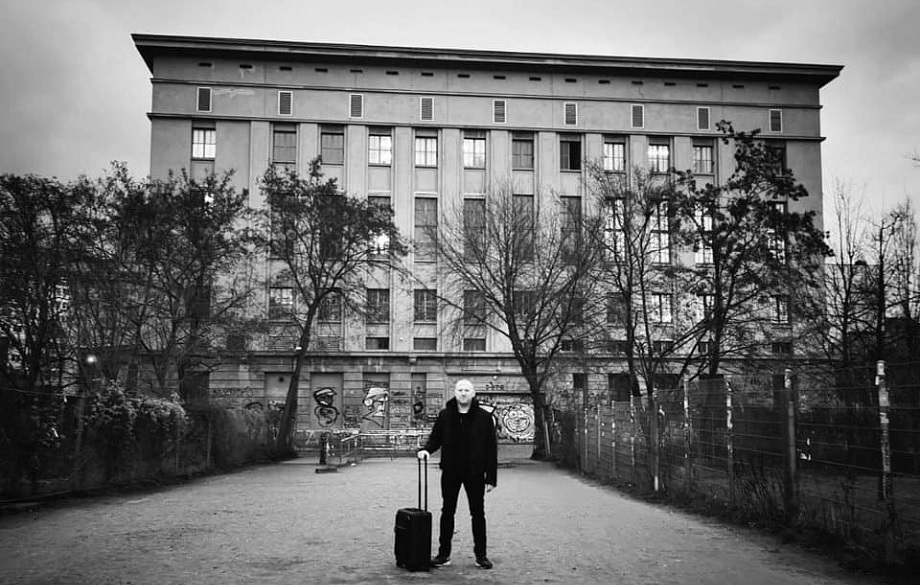
Like many other artists from Ireland, your story begins with Pirate Radio.
Yes! I was listening to electronic music on the radio before I was old enough to go to clubs. Pirate Radio was my gateway into the world of electronic music and it set me on the path to going to record shops, buying turntables and getting more involved in electronic music as a DJ. Pirate Radio is truly independent, DJs play what they want to play, they are usually people in your community taking to the airwaves to offer an alternative to commercial radio. This is truly the heart and soul of electronic music. That space is more occupied by online radio now, where stations can cater to taste instead of following charts and statistics. This is also really good, but I do miss that regional anti-establishment approach.
One of your early accomplishments was creating the DIT DJ Society, for what you received a lifetime achievement award in 2017. What’s the story behind that?
In 2001, I started studying at Dublin Institute of Technology, now Dublin Technical University. In Ireland, a lot of colleges have societies, which are funded by the college and run by students. I set up a DJ society as a collective to provide a platform for upcoming DJs. Over 4 years, we set up a DJ School, ran events and organized DJ competitions. When I graduated, I handed it over to my team. It would grow to be one of the country’s largest DJ societies, with others emerging in other colleges.
12 years in the Irish National Radio. That’s a long time and, for sure, that also means a lot of funny stories!
Radio was a big part of my life, I broadcast live for two hours every Thursday for almost 10 years. I started out on a late-night slot on a Dublin station. It was a 3-turntable mix show. Eventually, I would move over to RTE, where I began to do more documentary work, such as covering conferences such as ADE and Sónar. I interviewed a lot of artists and used the opportunity to learn more about electronic music culture and how they approached their studio work. My radio show led to running a series of events such as ‘Apocalypse Now’, driven by the music I was supporting on air. I would then write music for those shows and perform live on the night. This is how I started out as a live artist. There was a cycle of creativity happening, my radio show inspired my studio work and the events I was organizing, which then would feedback into my radio show via interviews and features with the artists performing at those shows.
You are a Sound and Music Technology engineer – who are some of the artists you’ve engineered for?
As a sound engineer at Temple Lane and Grouse Lodge, the music I worked on was quite eclectic. I recorded an album for Congolese World Music Artist Niwel Tsumbu, I recorded an album for David Griffin, lead singer of New Secret Weapon. I assisted on an album with Irish singer and songwriter Jimmy McCarthy. At that time, there was an incredible garage band scene in Dublin, and I was fortunate to work with a lot of incredible musicians. In terms of electronic music, my first mix credit on Rekids was for SRVD and their incredible remix of ‘Another Club’ by Radio Slave. I mixed their forthcoming EP Black on Black out soon on Rekids and I am mixing Radio Slave’s forthcoming studio album. I also do stem mastering for an Irish label called Distrackt Records. I love engineering, mixing and working with other artists. I enjoy the technical side as much as I enjoy working on my own music.
How do you think your time as an engineer benefited your music production?
As an engineer, I learned a lot about recording, the creative process and composition. I really enjoy the recording process, capturing a piece of music and working with a band to get the best possible results. Eventually, I got into the mixing process, working with Folk, Blues and Prog Rock bands. When you are in a studio environment, you are also interacting and working with other engineers. I learned a lot from other producers and engineers, it was a big part of my technical development and very influential. Engineering influenced me hugely as a producer. It gave me a deep understanding of audio processing, recording, mixing, working with analogue mixing consoles and outboard compressors. Every time I set foot in a studio that process influences how I work. The more you know about mixing and the finishing process, the more efficient your creative process becomes.
Being an event organizer, label owner and live performer, having played before Jeff Mills & The National Concert Orchestra. What’s the secret to wearing so many hats?
Too many hats at one point! When multitasking like this, the key is time management and working long hours. You have to be super-efficient with your time and be willing to work 12-15 hours a day, 6 days a week. Most of the time, I was operating at 4-6 hour sleep a night. At that point in my life, it was necessary. I took on every opportunity that came my way in order to keep pushing myself forward on every level. The downside is working like this is that it does lead to burnout and it does affect you creatively. That is why I moved to Berlin, to focus more on studio work and my Hybrasil label.

And it was there where you started to work alongside Radio Slave for his Rekids label and for his SRVD project with Patrick Mason. Was moving to Berlin your best decision to date?
Moving to Berlin has been the best decision I’ve ever made. It has enabled me to really concentrate on my studio work. Last year, Radio Slave asked me to help out with the SRVD live show at Panorama Bar. From there, I began working with him as a studio technician and I continue to work with SRVD on their live show. Matt and Patrick are amazing people to work with, I’ve really enjoyed my time with them. There are a lot of aspects to living in Berlin that I really love. I’ve learned a lot about the world of modular, from going to Schneidersladen and Superbooth. I try to go to Hard Wax at least every 2 weeks. I go to Berlin Atonal every year at the Kraftwerk building. I also love the food here; if you are vegetarian, it’s a great place to live and eat out.
How did it happen to start working with Radio Slave and Patrick Mason?
When I arrived in Berlin, I had nothing lined up in terms of work. It was very much a leap of faith which has worked out. I knew Radio Slave from my time as a promoter. I first booked him back in 2012 and I have been sending him music since. Last year, it was when he asked me to assist on the SRVD live show when things progressed.
In May, you released your first EP on Rekids and, now, your debut album Embers is also out on the label. What about both of them?
The EP was something I was working on for Matt for a long time. I think Bishop was signed in 2016 originally. It took me a while to get the package right. After the EP came out, I began working on a series of tracks inspired by my time living in Berlin and my experiences here in the city. The album very much flowed once I found my voice within those influences.
How did you produce it?
I composed the album in Ableton. I used some recordings from equipment in my Dublin studio, such as my Roland TR-909 and my Roland SH-09. The creative part for me is writing the chorus of the song, once I have that and I’ve put together something from my various sound sources, I compose the arrangement in Ableton. Once I am happy with the arrangement, I render everything out as stems and mix the track down in Logic.
Embers is your first album. It should mean a lot to you.
I’ve taken so much inspiration from living in Berlin, my experiences in the city and the people I have met here. Embers was my way of taking that energy and putting it back out there. It is a snapshot of my time living in Berlin.
What does Hybrasil see on the horizon?
I did my first live show at Panorama Bar on February 7th with Rekids, I joined Radio Slave, Mark Broom and Alinka. It was an incredible night of music from start to finish. I really enjoyed performing there. I’ve written a lot of music since the album. My next Hybrasil label release is out March 27th. The EP is titled Osiris and it features three tracks from my live show. I have more material coming out on Rekids in a few months, that will feature four new tracks that Radio Slave has been playing recently. I recently finished a remix for Rekids and we’ve been discussing a remix EP for my album. Outside of my own studio work, I am doing a lot of mixing and stem mastering for different labels and artists, I really enjoy working with other people’s music. There are some nice shows on the calendar already. I’m looking forward to the year ahead.
(Cover Image: © Barbara Klein)



